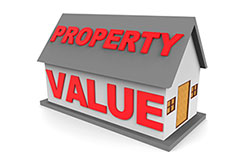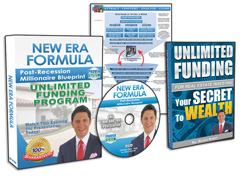
 Savvy real estate investors understand and appreciate the differences between the terms market value and fair market value (FMV), appraised value, assessed value, as is value, and after repair value (ARV), all to fashion their very best offers and formulate their strike price and set their maximum allowable offer (MAO), their top ceiling position. This knowledge is key for accurately estimating value and securing the best deal possible, all things considered.
Savvy real estate investors understand and appreciate the differences between the terms market value and fair market value (FMV), appraised value, assessed value, as is value, and after repair value (ARV), all to fashion their very best offers and formulate their strike price and set their maximum allowable offer (MAO), their top ceiling position. This knowledge is key for accurately estimating value and securing the best deal possible, all things considered.
Starting with market value or fair market value, it is the price certain real estate is likely to sell on the open market. It is the most probable price property should sell in an open and competitive marketplace. It is the price a willing buyer would pay and a willing seller will accept, both being fully transparent and fully informed. The IRS defines it “as the price at which the property would change hands between a willing buyer and a willing seller when the former is not under any compulsion to buy and the latter is under any compulsion to sell.” Fair market value is determined by a consideration of localized market trends. If inventory is low and the supply of available and comparable real estate is lower than the demand for same, the classic instance of supply and demand, in a seller’s market, the FMV is higher than what would otherwise be the case. The converse would be true in a buyer’s market, where there is an FMV reduction due to current market conditions. That price may not be an originally listed sales price or even represent the true value of the subject real estate.
How that market value is determined is generally through a comparative sales approach (CMA). That approach is comparing market value by looking at the prices of nearby comparable homes recently sold within the past 30, 60, even last 90 days. Reliance on professionals that understand the comparative localized marketplace is good business. These professionals offer adjustments in determining the price for differences in size, location, and the condition of the property.
Although the end analysis may be similar, appraised value is the value of a parcel of real property in the opinion of a qualified appraiser. Then there is assessed value which may accurately reflect a certain percentage value of the property’s market value by a governmental determination for the sole and primary purpose of assessing an annualized property tax valuation.
As is value is most commonly combined with market value resulting in as in estimate of the actual existing situation of the property in a snapshot of time. It is the best estimate of the property’s market value in its current physical condition, use, and zoning, often as a result of an appraiser’s determination.
Now comes the after repair value ( ARV) calculation and the formula used. Investors often purchase distressed properties with the game plan to fix them up and make a profit on the spread. To best maximize that spread, the investor must estimate the value of the property after all repairs are completed. Of course, home repair estimating is an art form unto itself.
So, the comps are done and the investor has a good handle on the property’s market value at the after repair value mark. Now comes the application of the 70% rule. The 70% of the ARV mark is the guidepost or barometer of calculating an offering value when purchasing distressed property for a profit. It is a rule of thumb and never an absolute. The determination matters as an investor makes his or her money when they buy, not when they sell. Buy at the wrong price and little or no profit may result. Once the marketplace inventory price point is calculated, the investor applies the 70% rule and determines a price now at 70% of that inventory price point then further subtracts from that number, the estimated repair costs, further adding to the repair cost number an additional 10% to cover the unexpected costs that always seem to crop up. That revised number is the investor’s current as is value which is the investor’s maximum allowable offer (MAO) so when the investor sells the property, the spread between the purchase price and the selling price is the investor’s profit. The investor sets the sales price by taking the revised downward number and adding in the profit sought. Guess wrong and the profit anticipated may be diminished or lost entirely.
To recap, the investor determines the ARV, then the repair costs, and calculates the MAO. It is a good negotiating ploy to start with a lower strike price for some negotiating wiggle room.
Knowing your numbers is crucial. If the numbers do not work, never force them. Just walk away. Success and profits depend upon a decent calculation spread between what is paid for property and what that property is sold for.
Request FREE Funding Kit and Discover How To Legally Bypass Banks And Gain Direct Access To "No-Credit-Required" Funding You Can Use To Achieve Your Financial Freedom... Start Now!












